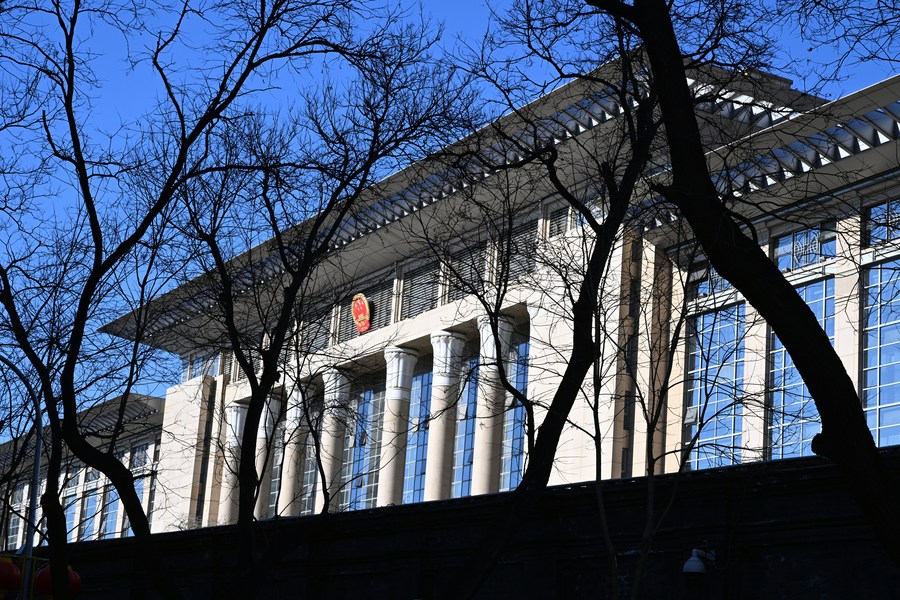
Editor's note: Alexandr Svetlicinii is Associate Professor of Law at the University of Macau, where he also serves as program coordinator for the Master of Law in International Business Law. The article reflects the author's opinions, and not necessarily the views of CGTN.
Recently, China's Supreme People's Court (SPC) has published the Opinions on Regulating and Strengthening the Applications of Artificial Intelligence in the Judicial Fields. The AI integration in the work of the courts serves several purposes: To alleviate the high administrative workload of the judges and allow them to concentrate on trial cases; to safeguard the justice system from corruption and other forms of undue influence; to upgrade the quality of the judicial decision-making.
The AI systems should be developed by 2025 and get put in full use by the courts by 2030. The present note explains the SPC's guidance on the standards applicable to the AI in the China's justice system and the expected functions of the AI in the works of the courts.
The New Generation AI Development Plan adopted by the State Council in 2017 called for an increased role of the AI systems in improving social governance. The plan called for the establishment of the "smart courts" that would operate integrated court data platforms assisting the judges in evidence collection, case analysis and processing of the case documentation. This AI development policy matched the current needs of China's judicial system.
Under the guidance of the SPC, the ongoing judicial reform has abolished the prior system of "judgment review and approval" where each judgment had to be endorsed by the judge's superior. The judicial reform has replaced this approval system by the independent decision-making and individual accountability of judges, which requires them to take personal responsibility over their judgments.
By removing the "judgment review and approval," the judicial system encountered the challenge to ensure that similar cases are decided in a similar manner. To ensure the coherence of the judgments and to prevent corruption and undue influence on decision-making of judges, the SPC advised the courts to require the judges to check prior similar cases to ensure that the judgments follow the existing interpretations of the law.
Accordingly, nearly all judgments were "digitized" and included in the searchable database. The specifically designed AI will assist the judges in identifying and extracting similar cases from the judgments database. The AI can also compare the draft judgment to the prior similar cases and issue an inconsistency warning that would require the judge to provide additional explanations about such existing divergences.
The integration of AI in case management can alleviate the judges' heavy workload by assisting with evidence collection, documents processing and generating the draft judgments and other court documents. Meanwhile, the SPC emphasized that the AI will serve only an auxiliary role without having any decision-making functions and the judges' personal accountability for judgments will be preserved.

The Supreme People's Court in Beijing, China, January 17, 2022. /Xinhua
The Supreme People's Court in Beijing, China, January 17, 2022. /Xinhua
The SPC also put forward several requirements for the AI products to be used in the judicial system. First, the AI design must adhere to the principles of fairness and justice, which means that AI products cannot reproduce discrimination or prejudice. Secondly, the AI products should ensure a certain degree of transparency and credibility, which would mitigate the "black box" problem in way that the features, capabilities and limitations of the AI can be understood by its users, including judges, litigants, and their representatives. Additionally, the AI systems should be accompanied by the risk management, emergency response and responsibility investigation mechanisms that would provide a timely response to possible risks and errors in the operation of these systems.
The compliance with the aforementioned principles may require deeper research and development work. The SPC suggested that such research should focus on judicial data processing, language recognition technologies, retrieval and reasoning models, and human-computer interaction.
While the Chinese courts have been experimenting with various AI solutions and products and already achieved a certain degree of AI integration in their case management and trial work, it is crucial for the SPC to assume the leading role in the construction of "smart courts" to ensure the consistency in the standards and functionalities of AI in the justice system.
(If you want to contribute and have specific expertise, please contact us at opinions@cgtn.com. Follow @thouse_opinions on Twitter to discover the latest commentaries in the CGTN Opinion Section.)